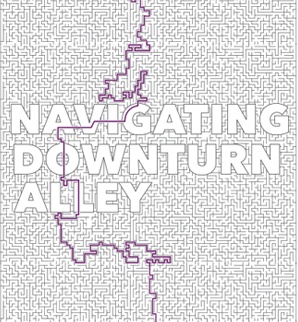Moderator
Nandita Lakshmanan
Chairperson, The PRactice
Participants
Garima Varma
Former Director, GE Research
Harish Bijoor
Brand expert and Founder,
Harish Bijoor Consults, Inc.
Shilpa Sharma
Co-founder, Jaypore
Edited excerpts from the 4th Viewpoint Roundtable
April 28, 2016 at Olive Beach, Ashoknagar, Bangalore
Like TV show reruns, recessions appear from time to time with a familiar set of characters (governments, industries, consumers) and plots (politics, policies, excesses). While the business environment is still positive in the country, there are signs of trouble in this ‘paradise’. The 4th Viewpoint Roundtable examined certain worrying aspects of the startup ecosystem so that founders can avoid being blindsided by these.
IS A DOWNTURN AROUND THE CORNER?
Nandita: Although we are not out to be prophets of dooms, we are, as PR professionals, always on the lookout for signs that could potentially erode the value of our clients. What we have observed in the current environment is that there is a focus on spending money but not on the fundamentals of business building. We felt it was important for founders to pause and reflect on whether they have all the ingredients in place to build a sound and solid business. So, the first point of discussion today is to look at what businesses are doing well and explore what they can they do better, with respect to a stakeholder universe of markets, employees, and customers.
Harish: We are a greedy people by nature. The whole world grows at 2.3% in GDP terms. We grow at 7.2% and we term it a downturn. This is not necessarily a negative attitude. If we have that kind of hunger in us, then we can go places. Still, a downturn is clearly in the cards and Bengaluru will be at its centre, along with Noida, Gurgaon and Pune. This city has eight startups for every square kilometer of area. It’s almost an epidemic now, especially since the startups we are seeing today are not fundamentally strong. Although you could have startup activity in sectors like agriculture and manufacturing, 97.4% of the startups in the country are in the services space. This is an over-exploitation of the space that is not sustainable. Even with our current growth rate, certain sectors are likely to experience some shakeout. And the services sector is clearly one of them.
Shilpa: In my own startup (that no longer qualifies as one), we have felt the heat. In the e-commerce space, everyone is trying to undercut the other person. Survival belongs to the fittest. But we feel we have a very tangible proposition. Our raison d’etre is not based on offering sweet deals to customers. We are offering a very differentiated product. If the unit economics of the business we are in work, then scaling is a matter of time and commitment. But if the unit economics don’t work in our favour, then no amount of funding can get us out of the hole we’ve dug for ourselves. We are all very passionate about what we do. But passion is a relative trait that can only take us so far. We also have to be good at what we do.
Garima: On the positive side, the current scenario is rife with opportunities for brand communicators. This is a good time to clearly articulate the value proposition of the product and definition of the brand. Companies who can get this right and are able to communicate it to stakeholders at the right time and through the right channels, are the ones who will survive the shakeout.
IN SEARCH OF CONCRETE STORIES
Nandita: Building to sell, building to scale and building to last. Can these three different strategies be reconciled? Or do they create a gap between short-term goals and long-term vision that widens over time?
Shilpa: I believe there is no long-term outlook if you cannot take care of short-term requirements. If you build to last, you will automatically be building to scale over a period of time. Building to sell is a very short-term orientation. In my own business, I believe the only viable option is to build to last. You have to invest in ways and means to acquire a customer but also ensure that you can retain this customer long enough for them to go out and be a champion for your brand.
Harish: There are three types of companies. The brick and mortar company deserves respect for investing in something that has value and that attracts footfall. Then there are virtual entities. E-commerce lies at the cusp of virtual and real enterprise because it has warehouses, logistics, delivery systems and other physical world issues to grapple with. The third type of business is entirely app-based with sustenance and fulfillment resting entirely on that solution.
I have worked with e-commerce, IoT and app-based startups and believe that, of the three, IoT has the most solid value proposition with real applications and tangible IP to drive value. E-commerce, however, is over-bloated on valuation. The money flows into it in tranches. Valuation is inflated to benefit the first investor while the last person holding the can will have to deal with the fallout. The entire movement is hollow and unless we see some solidity coming in, we will be in trouble.
Garima: Solidity will have to come from a very concrete product or service offering, If you look at all the players in the online grocery delivery space, I am personally confused about who I should use for what. I am guessing other people have the same problem with this lack of differentiation.
The second piece that is not being addressed completely is stakeholder engagement. Most of the efforts in this area are skewed towards the investor and unless there is a shift to focus on the consumer, employees, backend, delivery or the whole supply chain, there is a huge shakeout coming.
SOUND, ECHO & CLUTTER
Nandita: In this environment, are we confusing image with reputation? So much of what is viewed as being essential to reputation has become superficial or ostentatious. It includes the kind of office space you can afford, the salaries you can pay out to attract talent, and the number and kinds of front-page ads you can put out. But is this just noise that is distracting us from more important areas?
Garima: I would say yes. Most of us, including communicators, use communication-centric words such as image, reputation and perception loosely and interchangeably. We need to be able to differentiate one from the other.
Harish: We are besotted with image but not as concerned about reputation. If you peek into the budgets of some of the newer companies, less than 2% of these is devoted to building reputation. In the e-commerce space, for instance, there’s one global entity with a global reputation — Amazon. Then we have Flipkart, Snapdeal, Jabong and several others. A survey of 21,000 people to study their online buying patterns revealed a form of community shopping under which they look for the best possible deals from four or five players. These entities form a brand cluster that then gets decimated to a commodity cluster. At the end of the day the commodity wins. Since they are all perceived to be equal in their ability to deliver, there is no differentiation. The same pattern is playing out with hyperlocal services. It’s clear from all this that while image is hollow and reputation is solid, we are just not investing enough in the latter. The skew needs to change.
Shilpa: I think the only way for us to survive at Jaypore is through building a solid reputation. After all, we are offering products that people want but don’t need. People are buying into our promise because of the reputation we have built over time. It shows in our commitment to quality, our approach to geography, our liberal return policies and in the way we obsess about customer experience. We invest heavily in improving that customer experience. It doesn’t take that much to shift perceptions about a brand through image building campaigns. But the fact that we have been able to keep our sales returns at a fraction of the industry standard or boost our average deal size to four times the norm is entirely based on reputation. Without that, we don’t have a leg to stand on. Image can be built through a number of exercises but reputation building is an opportunity to truly walk the talk.
LOOKING BEHIND FOR HELP
Nandita: What were we doing differently in the past? Can we absorb some of these lessons to build more resilience for the journey ahead?
Harish: In the old days, a company would seek to be chosen on the basis of its brand name or reputation. Freebies, discounts and relentless price-cutting boost the commodity side of the business and spell the death of the brand. And that is what we see happening in e-commerce.
The brand is an experience and if you are building that experience, then you are doing the right thing. But who has the time for that anymore? Companies today are not being driven by the motivation of the brand manager but by the imperatives of the investor who seeks eyeballs, hits and first conversions over strategies to boost retention and loyalty. But new customer acquisition comes with a cost and we are ignoring that aspect.
However, we can’t transfer the lessons from one recession to the next decade and movement. Each of these lessons has to be learnt in the decade in which the recession happens. From 2010 to 2020 – the decade of startups – founders will imbibe the lessons that emerge and then move on.
Garima: In my view, the young people who are running the unicorns of today don’t understand what a brand is. Front-page covers and image matter more to them. The question is can we use this kind of introspection to weather the downturn that is likely to hit us? I think the answer is yes and no. Yes, if we can ponder on the significance of some of these issues. And no, if we continue to go along the path we are now on. People are in a fast-paced twitter mode. I have had multiple conversations with young founders on how they can do x, y and z to push their valuation up and that seems to be the end game. Personally, I am a little pessimistic about changing this mindset.
STAYING FIGHTING FIT FOR A NEW ERA
Nandita: We are dealing with a younger generation today – not just at the helm of companies but as customers. Does what we are discussing matter to them? Are we over-rating the relevance of a long-term orientation for a generation that is used to immediacy and instant gratification? The other big factor in all this is social media, and the wealth of information we now have access to. This was not available to us in the past. At one level, it seems messier and more complex but we can’t ignore the power of technology or the need to adapt our strategies to this changing base.
Harish: We certainly have a scratch card generation influencing the way we do business. But that’s not new. We saw a similar movement in this city and in Gurgaon with the BPO generation. We have moved from BPO to voice to data to KPO but the scratch card generation still holds sway. There are flimsy reasons to shift and loyalty is not an abiding characteristic of this generation. But my only problem with what’s happening currently is that it is turning out to be something of a ponzi scheme with a lot of money going in. Somebody in the middle
will end up paying for it. If investors are not going to push back against this, then we need other evangelists in this space.
Shilpa: Until I co-founded Jaypore, I had been in the brick and mortar business for years. And the challenges of that space are very different. We cracked that in FabIndia by first figuring out what strategies and store formats would work for different geographies. If you have built a brand and a legacy, you have to realize there is no one size fits all. I am now part of a brand that just happens to be in the online space. For every thousand customers who visit our website, only one or two may end up buying something. In order to get that customer, we have to talk to them in a space that they are comfortable in. Whether that involves physical stores or regular customers who can serve as evangelists for the brand, only time will tell. But there is no room for complacency when it comes to finding ways to connect with the customer.
Garima: I personally feel that technology can be a maze. If we can understand it better and deploy it, we can reach wider audiences as well as engage in one to one conversations. But I do think that technology is growing faster than we are able to keep pace with. So, we resist it to some extent because we are not able to get our hands around it. I find that most communicators are just scratching the surface when it comes to understanding and using technology. It’s not a problem with the tool but with us.
SUMMING UP
Nandita: The D-word (downturn) doesn’t have to be a bad one. It’s just an inescapable fact of business. But the bigger question is how true one stays to one’s core business purpose through it all. We all work under different conditions and circumstances but ultimately, sustaining that focus and sense of mission will be the key to navigating Downturn Alley.




